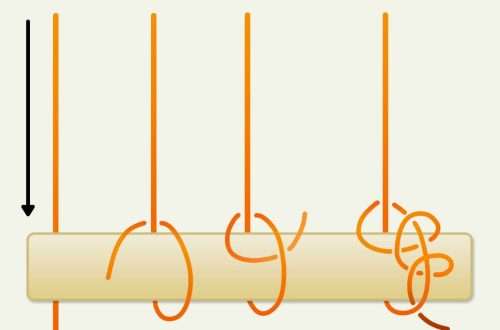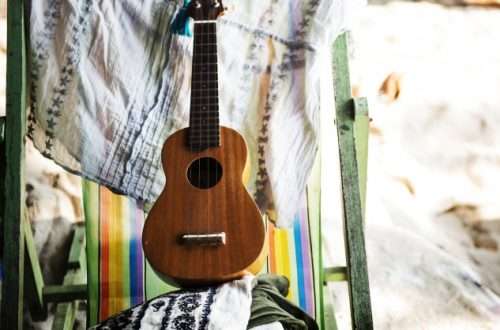
Ukulele History
Contents
The history of the ukulele originates in Europe, where by the 18th century stringed fretted instruments had been developing for a long time. The origin of the ukulele stems from the need of the then itinerant musicians to have handy miniature guitars and lutes. In response to this need, the cavaquinho , the ancestor of the ukulele, appeared in Portugal.
The story of the four masters
In the 19th century, in 1879, four Portuguese furniture makers went from Madeira to Hawaii, wanting to trade there. But expensive furniture did not find demand among the poor population of Hawaii. Then the friends switched to making musical instruments. In particular, they produced cavaquinhos, which were given a new look and the name “ukulele” in the Hawaiian Islands.

What else to do in Hawaii but play the ukulele?
Historians do not have reliable information about how it appeared, and also why a specific ukulele system arose. All that is known to science is that this instrument quickly won the love of the Hawaiians.
Hawaiian guitars have been around us for hundreds of years, but their origins are quite interesting. Ukuleles are commonly associated with the Hawaiians, but they were actually developed in the 1880s from a Portuguese stringed instrument. Approximately 100 years after their creation, ukuleles have gained popularity in the US and abroad. So how did all this happen?

History of appearance
Although the ukulele is a unique Hawaiian instrument, its roots go back to Portugal, to the waving or kawakinho stringed instrument. The cavaquinho is a smaller-than-guitar plucked stringed instrument with a tuning very similar to the first four strings of a guitar. By 1850, sugar plantations had become a major economic force in Hawaii and needed more workers. Many waves of immigrants came to the islands, including a large number of Portuguese who brought their cavaquinhas with them.
Legend dates the start of the Hawaiian craze for the kawakinho on August 23, 1879. A ship named “Ravenscrag” arrived in Honolulu Harbor and disembarked its passengers after an arduous journey across the ocean. One of the passengers began singing songs of thanks for finally reaching their destination and playing folk music on the cavaquinha. The story goes that the locals were very moved by his performance and nicknamed the instrument “Jumping Flea” (one of the possible translations for ukulele) for how quickly his fingers moved across the fretboard. Although, such a version of the appearance of the name of the ukulele does not have any reliable evidence. At the same time, there is no doubt that “Ravenscrag” also brought three Portuguese woodworkers: Augusto Diaz, Manuel Nunez and José to Espírito Santo, each of whom started making tools after paying for the move while working in the sugar fields. In their hands, the kawakinha, transformed in size and shape, acquired a new tuning that gives the ukulele a unique sound and playability.
Distribution of the ukulele
Ukuleles came to the United States after the annexation of the Hawaiian Islands. The peak of popularity of an unusual instrument from a country mysterious to Americans came in the 20s of the XX century.
After the stock market crash of 1929, the popularity of the ukulele in the United States plummeted. And it was replaced by a louder instrument – the banjolele.
But with the end of the Second World War, part of the American soldiers returned home from Hawaii. Veterans brought with them exotic souvenirs – ukuleles. So in America, interest in this instrument flared up again.
In the 1950s, a real boom in the production of plastic goods began in the United States. Plastic children’s ukuleles from the Maccaferri company also appeared, which became a popular gift.
An excellent advertisement for the instrument was also the fact that the TV star of the time Arthur Godfrey played the ukulele.
In the 60s and 70s, the popularizer of the instrument was Tiny Tim, a singer, composer and music archivist.
Then, until the 2000s, the world of pop music was dominated by the electric guitar. And only in recent years, with the development of the Internet and the massive import of inexpensive instruments from China, ukuleles have begun to gain popularity again.
Popularity of ukulele
The popularity of the Hawaiian ukulele was ensured by the patronage and support of the royal family. The Hawaiian monarch, King David Kalakauna, loved the ukulele so much that he incorporated it into traditional Hawaiian dances and music. He and his sister, Liliʻuokalani (who will become queen after him), will compete in ukulele songwriting competitions. The royal family made sure that the ukulele is completely intertwined with the musical culture and life of the Hawaiians.
Present tense
The popularity of the ukulele on the mainland declined after the 1950s with the onset and subsequent dawn of the rock and roll era. Where before every child wanted to play the ukulele, now they wanted to be virtuoso guitarists. But the ease of play and the unique sound of the ukulele help it to return to the present and be one of the most popular musical instruments among young people!





